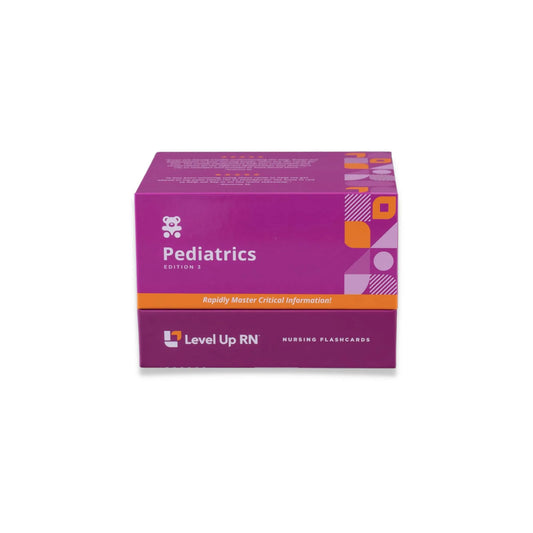Hi, I'm Cathy with Level Up RN. In this video, we will be discussing hand-foot-mouth disease, as well as mononucleosis. And at the end of the video, I'm going to give you guys a little quiz to test your understanding of some of the key points I'll be covering, so definitely stay tuned for that. And if you have our Level Up RN pediatric nursing flashcards, go ahead and pull out your flashcards so you can follow along with me, and pay close attention to the bold red text on the back of the cards because those are the things you are likely to see show up on a nursing school exam.
Hand-foot-mouth disease is a common viral infection caused by the coxsackievirus. It is spread through contact with respiratory secretions, as well as contact with the stool of an infected child. The incubation period is approximately three to five days, and signs and symptoms include malaise, a low-grade fever, anorexia, so a decrease in appetite, as well as a non-pruritic vesicular rash on the hands, feet, and around the mouth. So when I say non-pruritic rash, that is a fancy way of saying a rash that is not itchy. And then the child may have painful mouth sores as well. Treatment includes the administration of acetaminophen or NSAIDs to address fever and pain, and as a reminder, we would never give aspirin due to the risk of Reye syndrome. So as the nurse, you want to encourage increased fluid intake, as well as soft foods to avoid hurting those sores inside the mouth.
Next, we have mononucleosis, which is a communicable disease caused by the Epstein-Barr virus. So mono is often referred to as the kissing disease because it is primarily spread through contaminated saliva. So most individuals will become infected with this virus at some point in their life, but teens and young adults are more likely to experience symptoms of mononucleosis. Signs and symptoms include fever, sore throat, extreme fatigue, lymphadenopathy, which is enlarged lymph nodes, as well as a skin rash and splenomegaly, which is an enlarged spleen. In terms of diagnosis, a monospot blood test may be ordered, which checks for the presence of antibodies to the Epstein-Barr virus. Blood work may also show an increase in white blood cells, the presence of atypical lymphocytes, as well as an increase in liver enzymes. Treatment of mononucleosis is supportive, and may include acetaminophen or ibuprofen to address fever and pain. And then in terms of patient teaching, it is essential that you advise your patient to avoid contact sports because they are at increased risk for rupturing their spleen due to splenomegaly.
All right. It's quiz time, and I've got three questions for you.
Question number one. Why are soft foods recommended for a patient with hand, foot, and mouth disease?
The answer is due to painful sores in the mouth.
Question number two. A monospot blood test is used to diagnose blank.
The answer is mononucleosis.
Question number three. Why does a patient with mononucleosis need to avoid contact sports?
The answer is they are at increased risk for rupture of the spleen due to splenomegaly.
All right. That is it for this video. I hope you found it to be helpful. Take care and good luck with studying.
[BLOOPERS]
This is a communicable [inaudible].


